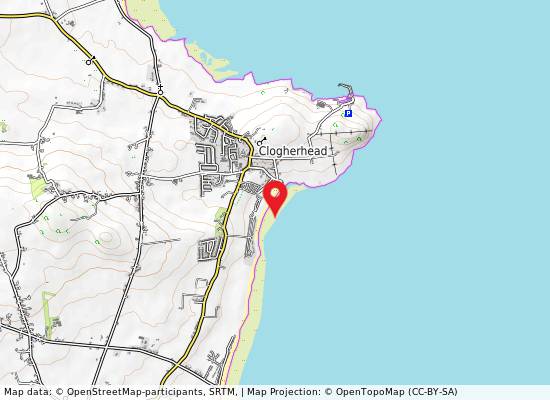
Clogherhead
- Water temp(satellite):
- 8.5°C
- 2025-12-27
Clogherhead is a beach in Louth. During the bathing season, a life guard is on duty. The beach is equipped with toilets and a parking lot. Dogs on lead allowed. Beach wheelchair is available. Beach Wheelchair available from Celtic Canoes Clogherhead contact David Reddy (085) 8758092Public bus
Clogherhead beach is a spacious and gently sloping sandy beach located mainly to the east, with rock and dune formations to the north. Two small rip currents exist at the beach's northern end, while the area features sand dunes and rocks, as well as a variety of marine life, such as crabs, jellyfish, sea beet, and limpets. To preserve the beach, Foreshore Byelaws 2003 prohibit motorized vehicles from entering the area. During peak season, an estimated 200 visitors visits the beach daily, which has a gently sloping bating area spreading over a length of roughly 1430 meters.
The Foreshore Byelaws 2003 are in existence to exclude motorized vehicles from the beach. The average daily visitor numbers to this beach estimated during the bathing season is 200.
The fishing village of Clogherhead is located on the east coast of Ireland in the County of Louth, approximately 70km north of Dublin. The headland affords uninterrupted views of the Cooley and Mourne Mountains 30km to the north and to Lambay Island 35km to the south. The village is in close proximity to the historic town of Drogheda. The village developed around the fishing industry with the waters of Clogherhead reputed as being the best fishing waters in the country. The harbour, known as Port Oriel was built in 1885. It was extensively enlarged and re-opened in 2007.
Clogherhead beach is a large open sandy beach that is gently sloping. The beach is facing mainly to the east. It is bordered to the north by a small headland and the designated bathing area extends for approximately 1430 meters to the south. The beach is bordered by a carpark and caravan park to the rear. There is an area of dunes that extends from beyond the carpark along the rear of the beach. There is an area of rocks to the north (outside the designated bathing area that are partially submerged at high tide. There are two small rip currents at the north end of the beach. The bathing area is approximately 1430m in length.
Photos near Clogherhead

